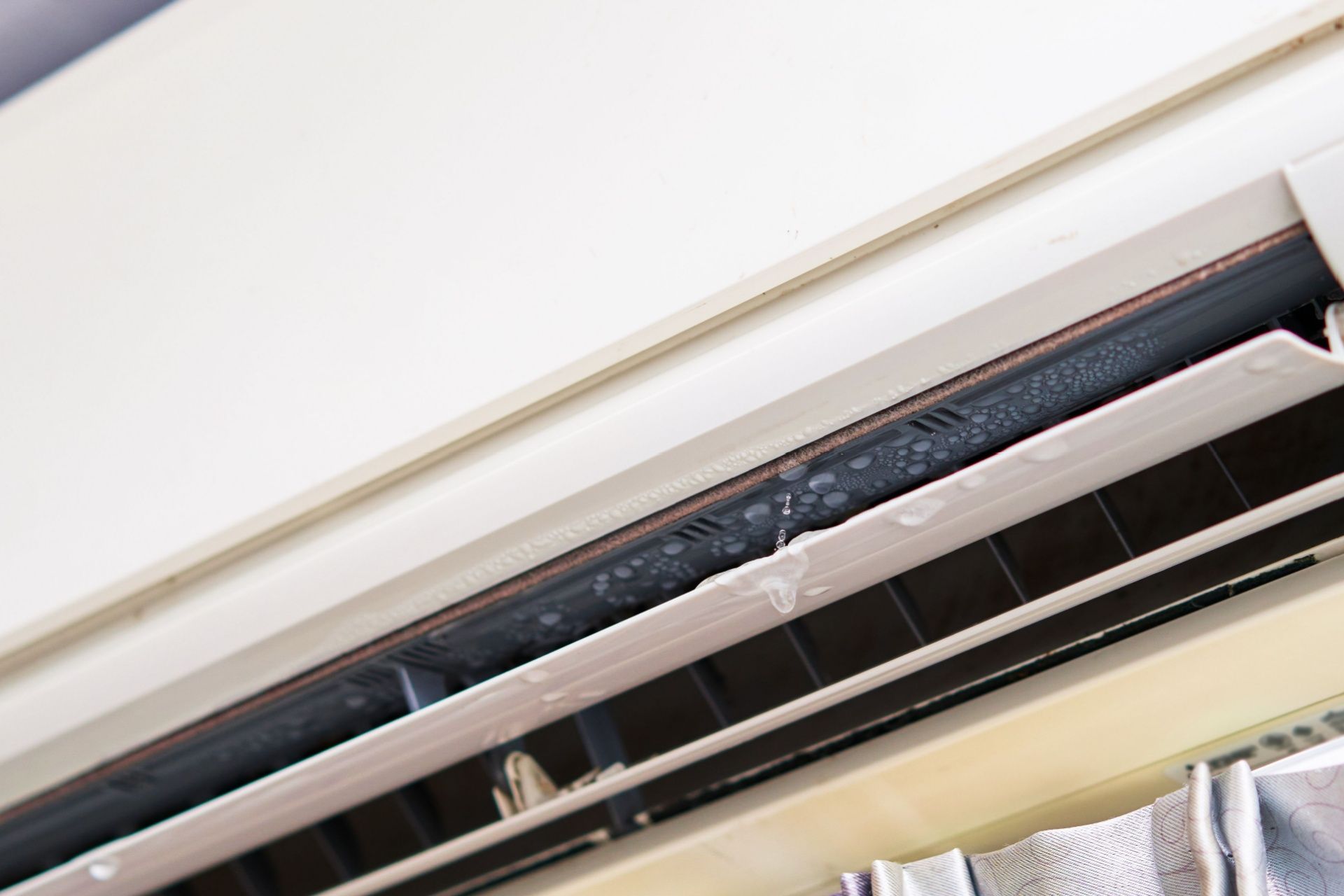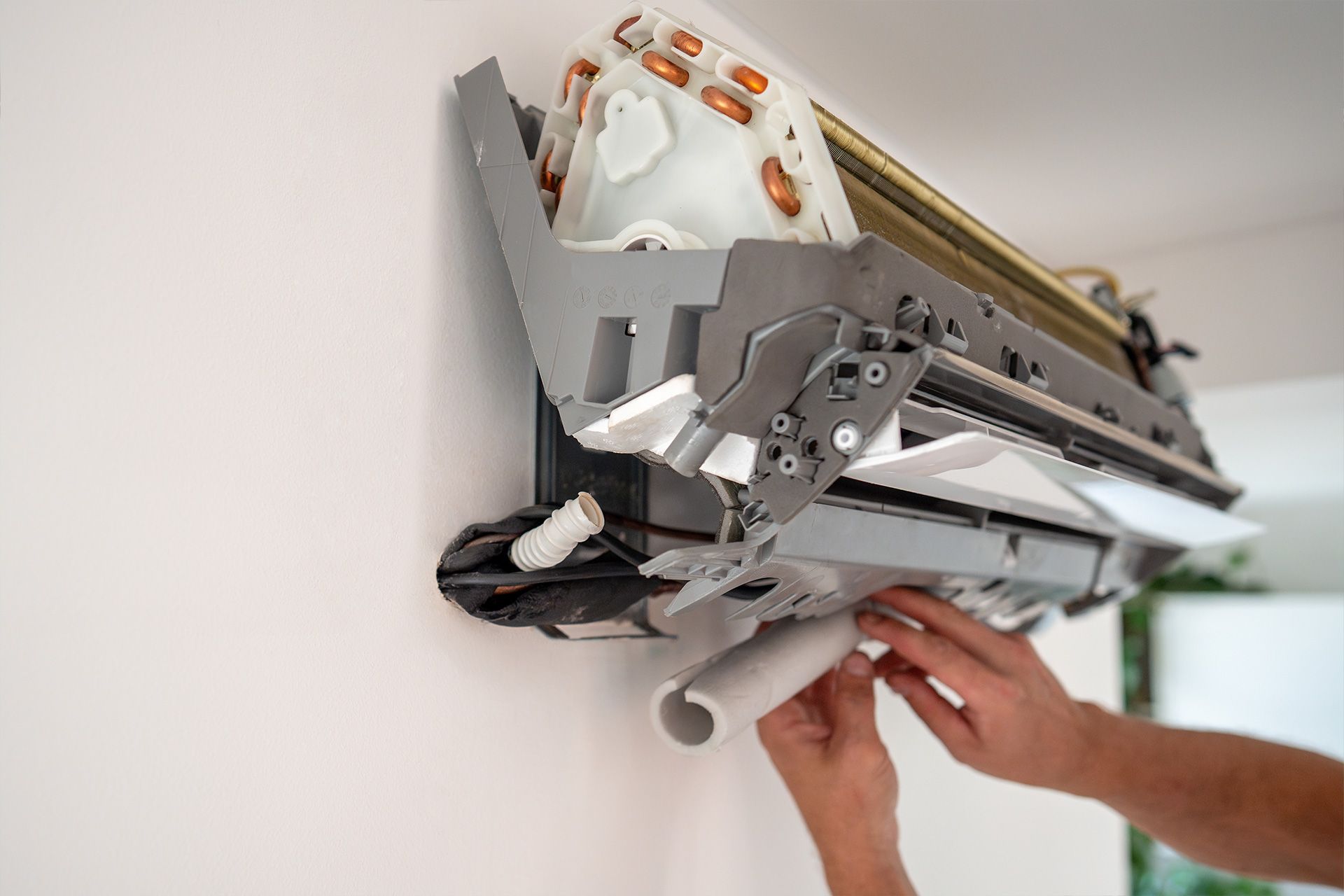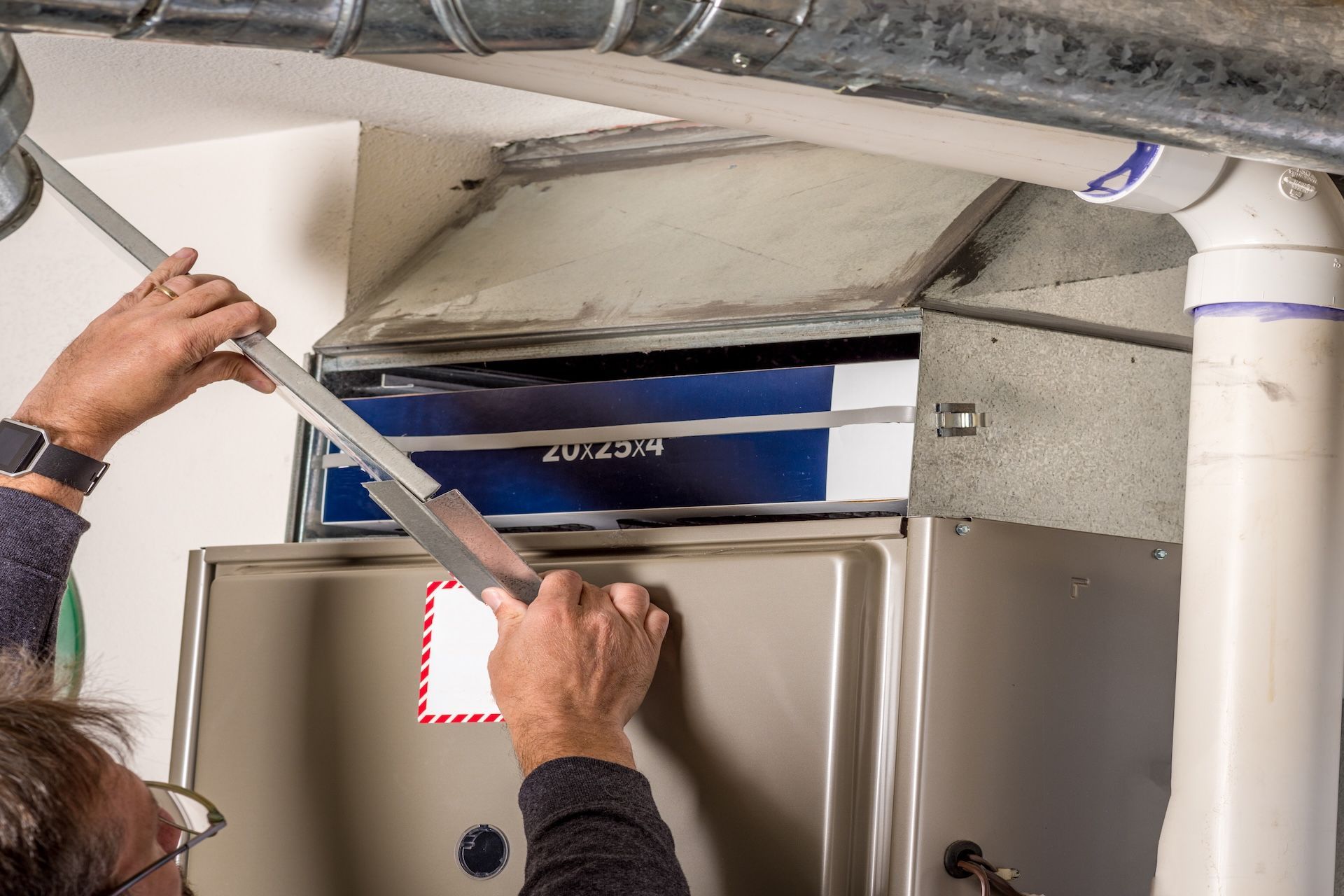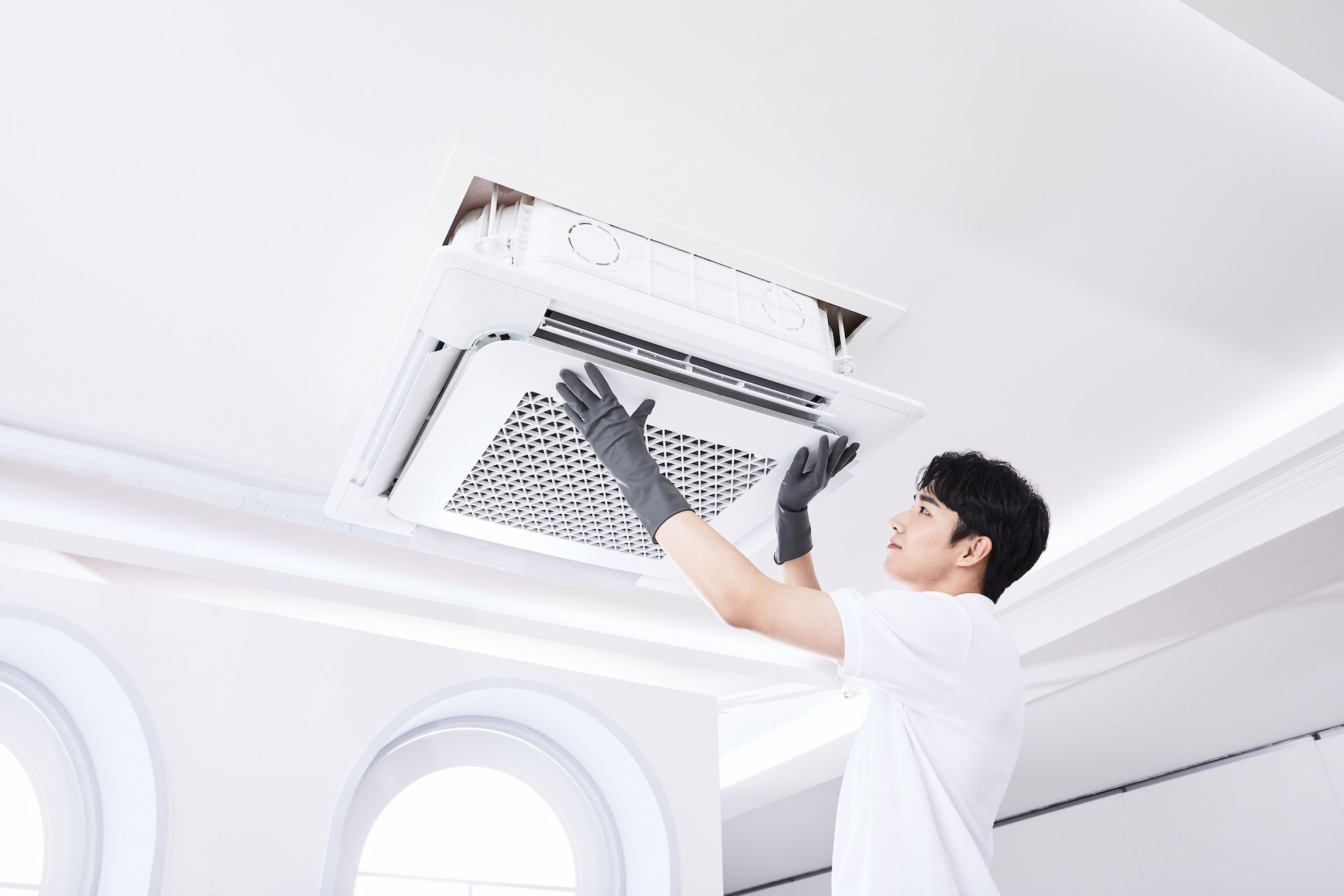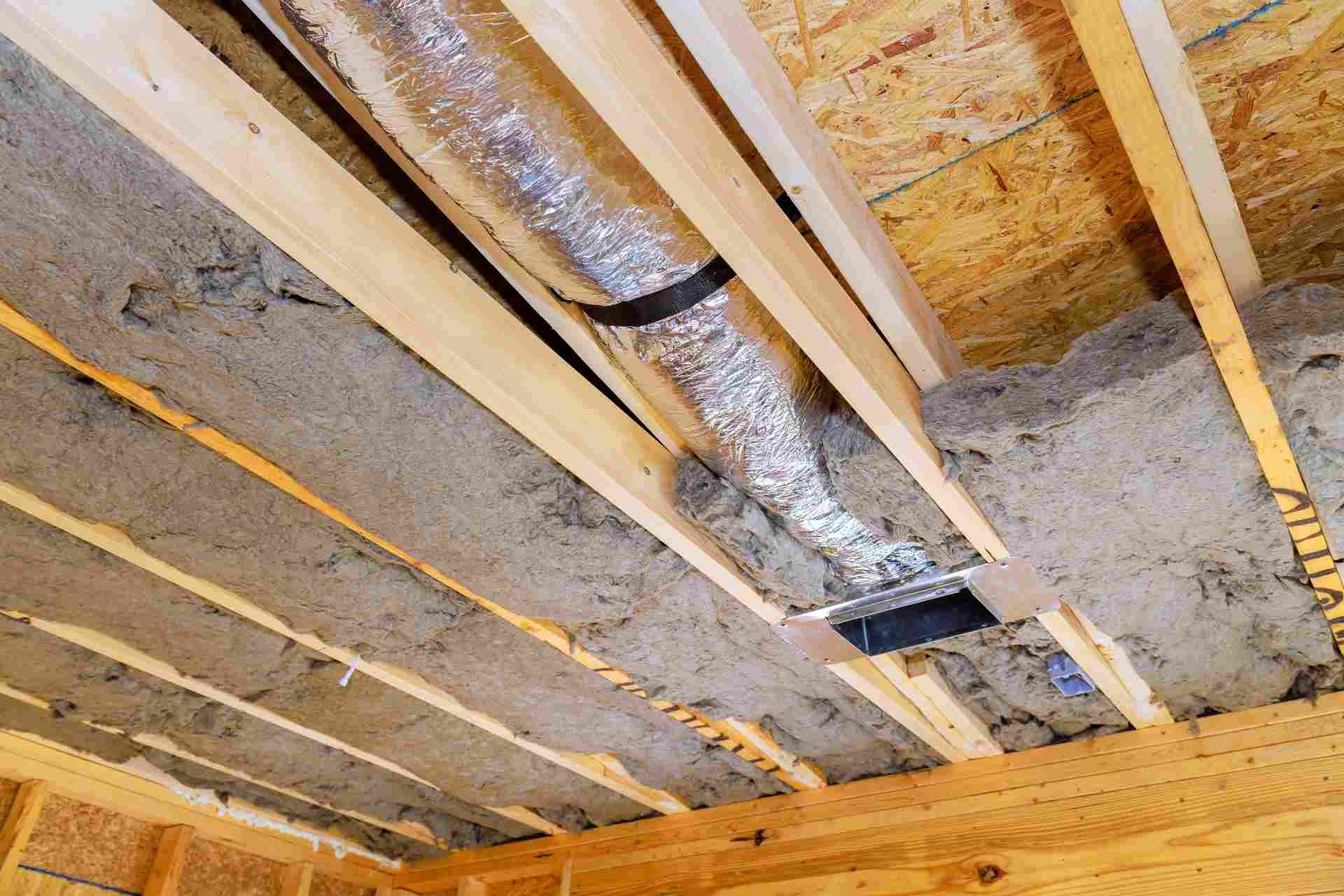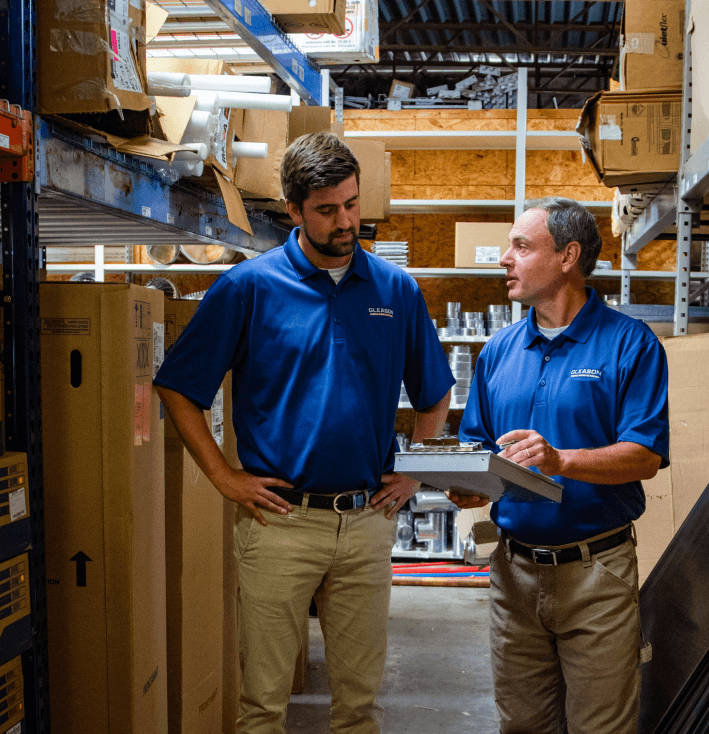Articles
HVAC Contractor Tips and Articles For Your Home
How Does Air Conditioning Work?

Did you know that over 87% of U.S. homes use air conditioning? This shows just how important air conditioning has become in our daily lives—especially during hot summer months. But have you ever stopped to think, what is air conditioning, and how does it actually work?
In this guide, we’ll break down the basics of an air conditioning system, explain the science behind it, and share helpful tips on keeping it running efficiently. Whether you’re curious about AC repair, air conditioning services, or air conditioning replacement, you’ll have a clear understanding by the end.
What is Air Conditioning?
Air conditioning is the process of cooling indoor air to make it more comfortable. But it’s not just about temperature—it also controls humidity, improves air quality, and keeps your home’s environment stable. An air conditioning system works by removing heat and moisture from the air inside your home and releasing it outside.
Think of it like a refrigerator, but for your whole house. Instead of cooling food, it cools the air you breathe.
The Main Parts of an Air Conditioning System
An air conditioner is made up of several important components, each playing a key role in the cooling process:
- Evaporator Coil – Located inside your home, it absorbs heat from the indoor air.
- Compressor – Pumps refrigerant between the evaporator and condenser coils.
- Condenser Coil – Located outside, it releases the heat collected from your home.
- Refrigerant – The chemical that moves heat between the indoor and outdoor units.
- Air Handler & Blower – Moves cooled air through your home’s ductwork.
- Thermostat – Controls the temperature by turning the AC on and off.
How Does Air Conditioning Work? Step-by-Step
To understand how an air conditioning system works, let’s look at the cooling cycle step-by-step:
1. The Thermostat Signals Cooling
When your home gets warmer than your set temperature, the thermostat sends a signal to the air conditioner to start the cooling process.
2. Warm Air is Pulled Inside
The blower pulls warm indoor air through return vents and passes it over the evaporator coil.
3. Heat is Absorbed by the Refrigerant
The refrigerant in the evaporator coil absorbs heat from the air. This process cools the air and also removes humidity.
4. Heat is Released Outside
The refrigerant, now carrying heat, is pumped by the compressor to the condenser coil outside. Here, a fan blows air over the coil, releasing the heat into the outdoor air.
5. Cool Air is Sent Back into Your Home
The cooled air is pushed back through your ductwork, lowering the temperature in your home.
This cycle continues until your home reaches the temperature you set.
The Science Behind Cooling
The magic of air conditioning lies in heat transfer. Heat naturally moves from warmer areas to cooler ones. An AC system uses refrigerant to move heat from inside your home to outside, making the indoor air feel cooler and more comfortable.
Types of Air Conditioning Systems
Not all AC systems are the same. Here are the most common types:
- Central Air Conditioning – Cools the entire home using ductwork.
- Ductless Mini-Split Systems – Ideal for homes without ducts; each room has its own unit.
- Window Units – Affordable and easy to install, but only cool one room.
- Portable Units – Can be moved from room to room, but less efficient.
- Hybrid Systems – Combine electric cooling with a heat pump for energy savings.
Why Air Conditioning Matters
Having a working air conditioning system is about more than just comfort:
- Health Benefits – Reduces risk of heat-related illnesses.
- Better Sleep – Cool rooms improve sleep quality.
- Air Quality – Filters dust, pollen, and other allergens.
- Humidity Control – Prevents mold and mildew growth.
Common Air Conditioning Problems
Like any machine, air conditioners can run into problems. Here are some issues that may require AC repair:
- Weak Airflow – Could be due to a dirty filter or ductwork issues.
- Warm Air Blowing – May indicate low refrigerant or a faulty compressor.
- Water Leaks – Caused by a clogged drain line.
- Strange Noises – Loose parts or motor problems.
- Short Cycling – The system turns on and off too often, affecting efficiency.
Tips for Keeping Your Air Conditioning System in Top Shape
Regular maintenance is key to avoiding costly repairs and extending the life of your AC. Here’s what you can do:
- Change Air Filters – Replace every 1–3 months for better airflow.
- Clean Outdoor Unit – Keep the condenser free from leaves and debris.
- Schedule Professional Inspections – Have a pro check your system at least once a year.
- Seal Leaks in Ductwork – Prevent cool air from escaping.
- Use a Programmable Thermostat – Save energy by adjusting temperatures when you’re not home.
When to Consider Air Conditioning Replacement
Even the best air conditioners won’t last forever. You might need air conditioning replacement if:
- Your system is more than 10–15 years old.
- Energy bills keep rising.
- Repairs are becoming frequent and costly.
- Your home feels humid or unevenly cooled.
- The system uses outdated refrigerant (R-22).
A newer AC model will be more energy-efficient, quieter, and better for the environment.
Professional Air Conditioning Services
While DIY maintenance can help, many tasks should be left to professionals. Air conditioning services can include:
- System installation.
- Annual tune-ups.
- Emergency AC repair.
- Indoor air quality checks.
- Energy efficiency assessments.
Hiring a licensed HVAC technician ensures your system runs safely and efficiently.
Final Thoughts
Understanding what air conditioning is and how it works can help you take better care of your system, save money on energy bills, and enjoy a more comfortable home. Whether you need air conditioning services, a quick AC repair, or a full air conditioning replacement, keeping your cooling system in top shape is an investment in your comfort and health.
Stay cool this summer—contact Gleason Heating & Air Conditioning today for expert air conditioning services you can trust!
FAQs: Air Conditioning
What is air conditioning?
Air conditioning is a process that cools and dehumidifies indoor air to make your home more comfortable. An air conditioning system removes heat from inside and releases it outdoors.
How does an air conditioning system work?
An AC system uses refrigerant to absorb heat from indoor air, transfers it outside, and then sends cooled air back into your home through ductwork.
What are the main parts of an air conditioner?
Key parts include the evaporator coil, compressor, condenser coil, refrigerant, blower, and thermostat.
When should I replace my air conditioner?
Consider air conditioning replacement if your unit is over 10–15 years old, frequently breaks down, or has high energy costs.
What maintenance does an AC system need?
Regularly change air filters, clean the outdoor unit, seal duct leaks, and schedule annual professional air conditioning services.
Can I repair my air conditioner myself?
While simple tasks like changing filters can be done at home, AC repair involving refrigerant, electrical work, or major parts should be handled by a licensed technician.
Disclaimer: The information on this website and blog is for general informational purposes only and is not professional advice. We make no guarantees of accuracy or completeness. We disclaim all liability for errors, omissions, or reliance on this content. Always consult a qualified professional for specific guidance.

